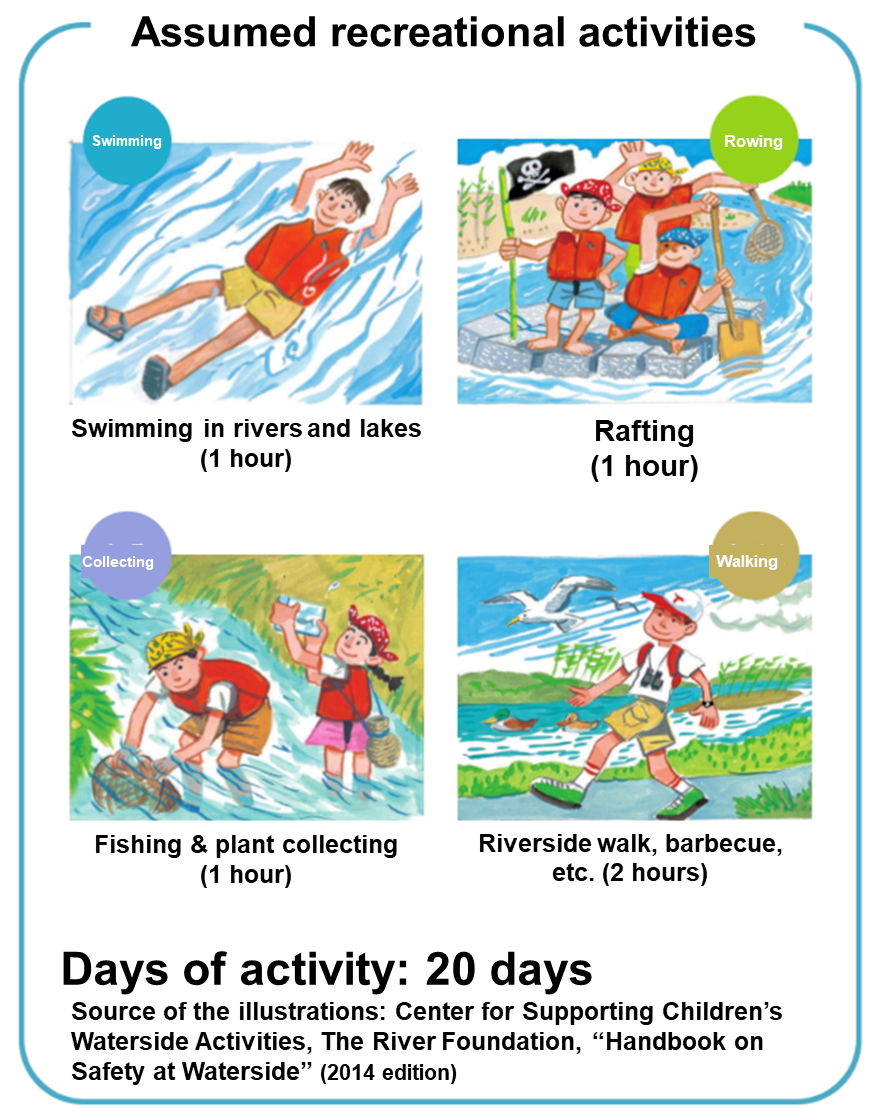Radioactivity Dynamics in River System
(2014)
QHow much radiation dose is expected for water-based recreational activities?
AEven when the concentration of radioactive cesium at the riverbottom and air dose were assumed to be high (conservative assumption), maximum radiation doses by water-based recreational activities was about 0.03 mSv.
Estimation of radiation dose for recreational activities along river banks
- Estimates were made supposing that a child often plays at rivers and lakes over summer vacastion (Lower Figure)
- Even when the concentration of radioactive cesium at the river botto and air dose rates were assumed to be high (conservative assumption), radiation doses by water-based recreational activities was 0.031 mSv for rivers 0.030 mSv for lakes.

Table 1 Estimated exposure doses from water-based recreation (Ministry of the Environment, 2015, partially modified)
| River | Lake | |||
|---|---|---|---|---|
| Assumed condition※ | Averaged condition | Conservative condition | Averaged condition | Conservative condition |
| Concentration of radioactive cesium at the bottom (Bq/kg) | 200 | 2,000 | 500 | 5,000 |
| Air dose rate in peripheral environment (µSv/h) | 0.3 | 0.6 | 0.2 | 0.5 |
| Estimated radiation dose (mSv) | 0.013 | 0.031 | 0.0086 | 0.030 |
※ Concerning the concentration of radioactive cesium in bottom sediment and air dose rates in peripheral environment, both averaged condition and conservative condition are assumed on the basis of the mean values and 90% percentile values in Fukushima Prefecture (except for evacuation order district).
Reference: Documents 5 used in the 13th Meeting on Environmental Recovery, Ministry of Environment “Outline of Radiation Exposure Estimation by Recreation Activities at Waterside”)
